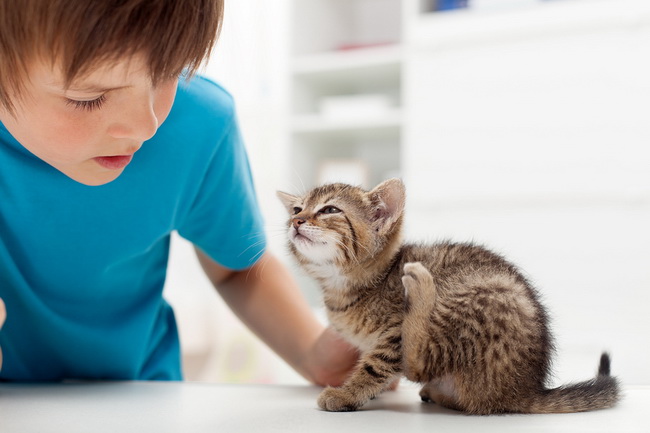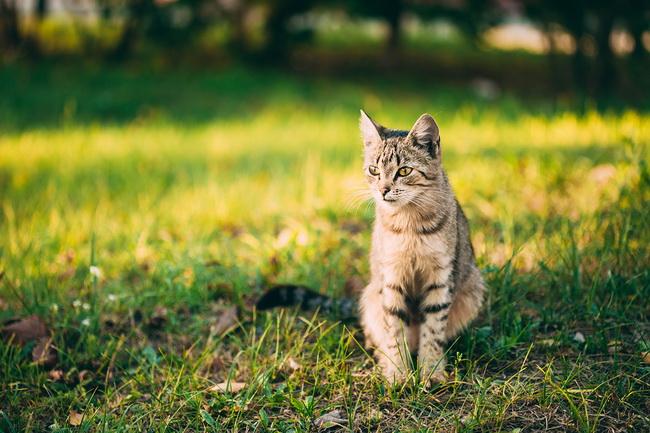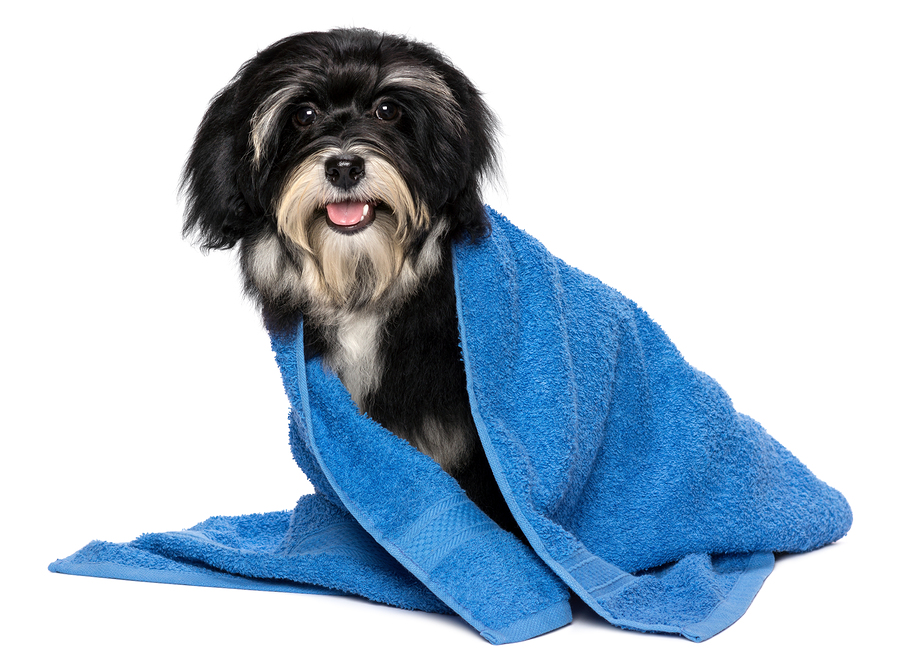- Make It Yourself Lavender Heart-Shaped Bath Bombs!
- 20 Things You Never Knew About “Down There”
- 12 Best Foods For Those Suffering From Arthritis Pain
- 12 Personal Hygiene Mistakes Almost Everyone Makes (Mom Never Told You About #4!)
- 15 Medicinal Plants And Herbs From The Cherokee People
- 12 Mind-Blowing Benefits Of Drinking Coconut Water During Pregnancy
- 12 Outstanding Winter Foods That Won’t Fatten You Up Like A Christmas Turkey
15 Ways Your Home Might Be Poisoning Your Pet (We Never Thought About #9!)

Photo credit: bigstock.com
Our pets always have a special place in our lives. They can help us be more social, give us major stress relief, and even improve our health. Many of us consider our pets a part of our family, but aren’t they really more than that? Think about it: our pets act as friends, guardians, workout companions, traveling companions, even therapists.
Because of the special relationship we have with our pets, they often occupy our homes. They drink the same water, breathe the same air, sit on the same furniture, sit on the same lawn, and many times, sleep on the same bed as we do. This means that they are exposed to the chemicals and toxins in everything inside and outside our homes.
Because they tend to be much smaller than us, our pets are often the first ones to show signs of illness or to warn us of an immediate problem in our living spaces.
This has been known for ages, which is why many workplaces used animals to warn workers about possible hazards. Canaries used to be brought down to mine shafts to warn miners when the mine was filling with toxic gasses. In Japan in the 1950s, many fish were filled with mercury contamination far greater than what we are experiencing today. Back then, it was cats who first alerted the population to the problem when they began to show symptoms of mercury poisoning, later known as “dancing cat fever.”
Our pets have much more contact with household dust, floor surfaces, and outdoor plants and soil. Most pets’ grooming habits also make it much more likely that they will consume pollutants and toxins. This means that our pets are very much like the canaries in the coal mines; they can warn us of invisible dangers.
Since we are responsible for their health, we should also be responsible enough to give them a space as free of toxins as possible. By looking at the worst offenders around the home, we can reduce these toxins and make a healthier space for both our pets and ourselves.
Keep reading and find out the top 15 sources of toxins that might be slowly poisoning your friend and companion.
1. Mothballs
When used properly, mothballs work well, killing moths and deterring other types of insects from bothering our clothes. However, when left lying around carelessly or when not used properly, they pose a terrible health risk to our pets. Just inhaling the scent of mothballs can cause eye irritation, severe headaches, and respiratory distress. If your pet should eat even one of these strong smelling clothes protectors, it can cause seizures, heart arrhythmia, liver damage, respiratory distress, and even death. Repeated inhalation of fumes or eating just a couple mothballs can be fatal. For some reason, some pets seem to be really attracted to these things. Ditch the mothballs and use cedar sticks, which smell great, and are non-toxic.
Continue to Page 2

Photo credit: bigstock.com
2. Perfluorochemicals
There are several types of perfluorochemicals, basically lumped together and called PFC’s. They are a type of artificial chemical that have been used since the 1950s as a coating to make products resistant to stains, water, oil, or heat. They are used in a wide variety of applications, including furniture, adhesive, clothing, food packaging, carpets, rugs, and even dental floss. Perhaps the most well-known PFC is Teflon. These chemicals are super long lasting and do not degrade easily, which means that they can persist in our environment for years, contaminating our air, soil, food, and water. One study, conducted by the Environmental Working Group, took a look at the blood of household cats and dogs to see if they contained the same level of PFCs as humans do. This study found that dogs had 3 times more of these toxins in their blood as their owners did, while cats were right about the same as humans. PFC’s are hormone disruptors, cause liver damage and damage to the pancreas, liver diseases, thyroid disease, and cancer. Avoid these dangerous chemicals by avoiding non-stick cookware and opting for cast iron or copper pans instead. You can also avoid those “stain resistant” carpets, rugs, furniture, and especially pet beds. Steer clear of any name such as Gore-Tex, Stainmaster, Scotchgard, or Teflon. All of these items contain PFCs.
3. Antifreeze
Almost all antifreeze used in cars today contains a substance called ethylene glycol. This compound is sweet smelling and has a flavor that most cats and dogs seem to like. Unfortunately, even as little as half of a teaspoon of antifreeze can kill a housecat. One cup (8 ounces) can kill a large, 75-pound dog. Even just one or two licks can cause irreversible kidney damage. Always keep an eye out for small green puddles on sidewalks, parking lots, driveways, and alongside curbs, any place where a car can leak antifreeze can mean death to a small animal. If you see antifreeze on your driveway or any other place, wipe it up immediately. Also, consider changing the antifreeze in your car to propylene glycol, which is not nearly as toxic as ethylene glycol.
4. Phthalates
Phthalates are a chemical plasticizer, which are used to make products more flexible and softer. They are another dangerous chemical which are used in everything from shower curtains to raincoats, medication capsules to plastic wrap, shampoo to perfume to nail polish. Phthalates are considered to be a human carcinogen, according to the National Toxicology Program. Although the worst offenders have been removed from children’s toys, there have been no efforts to remove these toxins from pet toys and pet dishes. Testing done for phthalates in dog urine have found the same compounds that have been banned in kid’s toys. To avoid these chemicals, store your pet’s food in any type of container except for plastic. Consider stainless steel water and food bowls for your pet and purchase only phthalate-free chew toys for your dog.
5. De-icing Salts
Those de-icing salts that are used to melt ice and snow are a really dangerous hazard for your pets. After walking on these treated surfaces, dogs licked their paws and many became sick. These can be short-lived illnesses such as vomiting, nausea, and hyper-salivating, but consuming large quantities can lead to an electrolyte imbalance that can cause irritation to the gastrointestinal system, lethargy, and tremors. De-icing salts are also well known for causing skin irritation, cracks, and burns on the pads of dogs’ feet. Use waterproof doggie boots when sidewalks and streets have been salted. Don’t use salts on your driveways or sidewalks, and instead use kitty litter, sand, or crushed cinders whenever possible.
6. Flame Retardant Chemicals
These are added to almost everything in the home, including textiles, building materials, electronics, and almost all home furnishings. Flame retardant chemicals have been used for decades but tests have shown that they don’t actually offer much protection from fire. In spite of evidence to the contrary, furniture continues to be treated with flame retardant materials. In this instance, cats tend to test more positive for these dangerous chemicals than dogs do, perhaps because they spend more time on the family furniture. Vacuum with a HEPA filter that helps to pick up these dangerous fibers. Look for more natural fibers such as polyester, cotton, down, and wool. Avoid polyurethane foam products and don’t purchase items that are marked “flame retardant.”
7. Fertilizers
Believe it or not, lawn fertilizers are often combined with herbicides. The most common type call themselves “weed and feed”, combining herbicides and fertilizers. The Journal of the National Cancer Institute found that there was a definite link between herbicides and malignant lymphoma in dogs (not to mention non-Hodgkin’s lymphoma in people!). Dogs were twice as likely to develop lymphoma even if their owners used these herbicides on their lawns just four times a year. Even if you don’t use these types of fertilizers, your local park might. You can avoid this dangerous risk to your pet by using natural fertilizers, such as plain cow manure or fish fertilizer, or corn gluten, which naturally helps to prevent weeds while being a great fertilizer for lawns.
8. Formaldehyde
You most likely already know that this is a human carcinogen, but it is used in just about everything from insulation to building materials, paint, wood finishes, lacquer, glues, and preservatives for medicines. Formaldehyde is released into the air when it reaches room temperature. This toxin is then inhaled, absorbed through the skin, or even consumed in our foods. Formaldehyde is toxic to all living things and yet, it still has not been banned. To avoid this chemical, keep windows open when painting or doing renovations. Read product labels carefully to avoid formaldehyde in shampoos and other products. If it contains sodium hydroxymethylglycinate, quaternium-15, diazolidinyl urea, imidazolidinyl urea, or DMDM hydantoin, purchase another product. Look for more natural products, such as cotton, rayon, metal, wool, solid wood, and stainless steel, which are highly unlikely to contain formaldehyde.
Continue to Page 3

Photo credit: bigstock.com
9. Bathroom Cleaners
If your dog is like ours, it doesn’t mind drinking out of the toilet. However, most bathroom cleaners contain dangerous chemicals that can cause your dog (or cat) serious harm. Many people use those “automatic” bowl cleaners that continually release small amounts of bleach into the toilet. These are terribly dangerous for your dog. Drain openers, glass cleaners, even all-purpose shower and tub cleaners contain more chemicals than any pet can endure. You might get lucky and find that your dog simply vomits a few times. However, there have been reports of dogs being killed when they drank out of a toilet that was cleaned with a name brand toilet bowl cleaner. Use natural products to clean your toilet, such as vinegar and baking soda, because no matter how carefully you try to keep a lid on it, all it takes is one accident to cause harm to your faithful friend.
10. Flea Killing Chemicals
Keeping control of fleas is very difficult for all pet owners. Surveys have shown that at least 50 percent of all families in the US use some type of flea and tick control. Even flea products that list themselves as natural can still be toxic. One particular favorite is a “natural” chemical called d’limonene, which is derived from the peels of citrus fruit and sounds really safe, but the truth is this substance is highly toxic to cats. Flea dips that contain all natural “pyrethrin” can be toxic to some smaller pets. Even overuse of essential oils can be dangerous to cats. Cats cannot metabolize essential oils, which means overuse can become cumulative. Try using electronic flea traps, which are very effective at controlling fleas both indoors and outdoors. You can also try diatomaceous earth to control flea eggs and larvae.
11. Other Pesticides
Besides the flea control pesticides, there are numerous other pesticides used to control everything from flies to mosquitoes to aphids. Pesticides are a danger to every living thing, including human beings, birds, bees, fish, and amphibian wild life. Our pets are often the first ones to come into contact with treated lawns, bushes, and other plants. They inhale them, absorb these toxic chemicals into their skin, and drink water that has been contaminated. Many pesticides have been linked to higher rates of bladder cancer. One research study found that 19 of 25 dogs tested had lawn pesticides in their urine in high amounts. Even if you don’t use pesticides, your neighbors might, and pesticides can drift for at least 50 feet! Do your best to avoid getting your pet contaminated by cleaning their paws after they have been outside. Always choose alternatives to chemical pesticides, and if you have a good relationship with your neighbors, talk to them about the dangers of chemical pesticides.
12. Glycol Ethers
These are another toxic chemical that can be found in many commonly used cleaning products, especially spot removers, carpet cleaners, rug cleaners, upholstery cleaners, and glass cleaners. These cleaners have been linked to lung damage, anemia, and kidney damage in both pets and humans.
13. Laundry Soap
You might think that laundry soap couldn’t possibly matter because it goes in the washing machine and then is rinsed way with the rinse water, right? But there is definitely a residue left on our clothes, pet beds, pet blankets, and pet toys that can be harmful to your dog or cat, especially if they chew on these items. Some of the most popular brands, such as Cheer and Tide, contain toxic ingredients to pets. Use natural, non-toxic pet-safe lines of cleaners and laundry soaps.
14. Ammonia
This strong smelling chemical is used in numerous de-greasing products for cleaning ovens, stainless steel, and glass. Ammonia has a high VOC level, which can mean serious burns to the nasal passages and the mucous membranes of the respiratory system, and can even contribute to asthma. If mixed with bleach, ammonia can create a gas that is deadly to both pets and humans.
15. Chlorine
This is perhaps one of the most commonly used disinfectants around the home. Chlorine is used in automatic dish detergents, toilet bowl cleaners, and bathroom cleaners. Chlorine can cause vomiting, diarrhea, dizziness, and laryngeal edema. You should definitely think twice before letting your pet swim in a pool that contains chlorine. There are many safer alternatives to chlorine for your pool or hot tub. Check at your local home repair store or speak with your pool service person about safer alternatives.
READ ALSO: 12 Plants That Are Toxic to Children and Pets (#12 is Super Popular, Too!)
Although most pet owners will go to great lengths to keep their pets safe, there are plenty of unseen health hazards that can affect our pets if we don’t keep an eye out for them. Keep the health of your pets in mind whenever you purchase anything for your home, no matter how small or insignificant it might seem.
References:

































